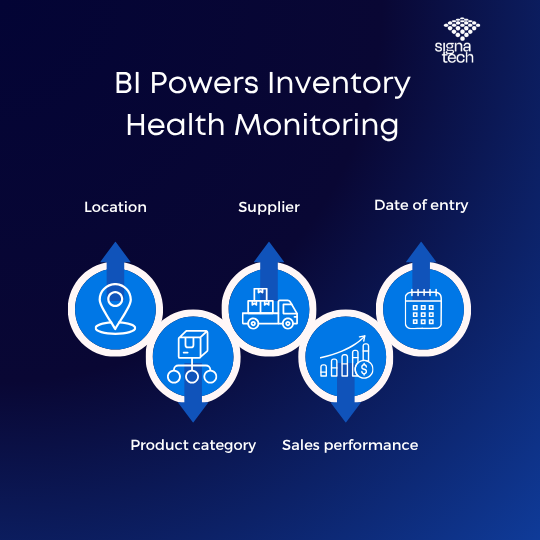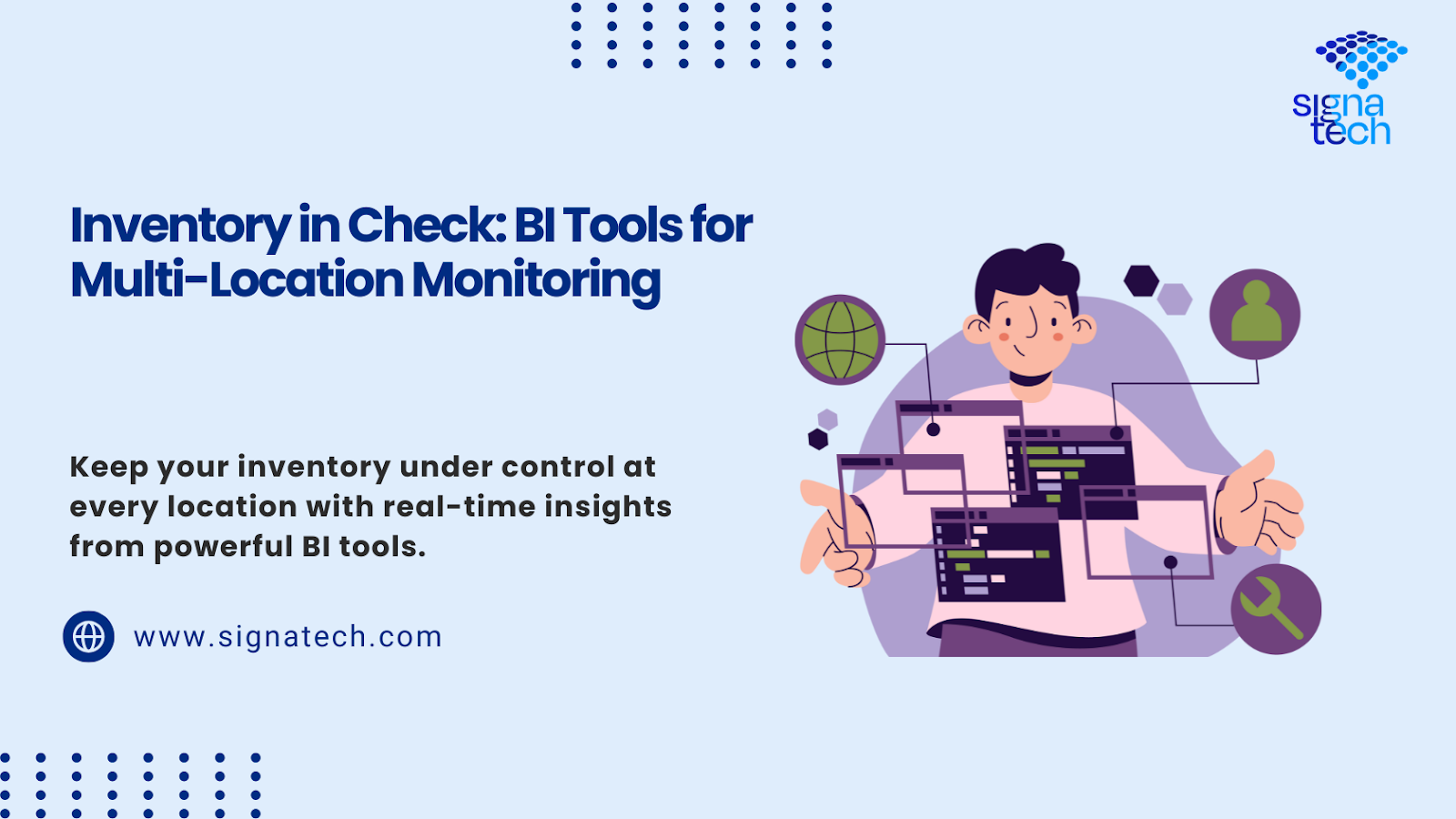Effective inventory management is the key component to success in a fast-paced and competitive supply chain. When an organization operates two or more warehouses, retail shops, or distribution centers, the challenges of maintaining visibility into your inventory levels, turnover rates, and aging inventory increase significantly. As a part of Business Intelligence (BI), Inventory Health Monitoring provides a powerful way to take data-driven control and visibility across locations and to work toward having that continuous visibility in real-time.
Modern BI systems allow a company to continuously monitor and maintain the health of their inventory across multiple locations, leading to easier day-to-day operations, lower losses, and to provide data that can help guide management decision-making data-driven.
What is Inventory Health Monitoring?
Inventory Health Monitoring describes the art of continuously tracking, analyzing, and optimizing the condition of inventory at multiple locations. This involves tracking inventory levels, inventory speed rates, aging inventory, shrinkage, and obsolescence levels in real-time or near real-time conditions. The advent of advanced BI tools renders a process that was probably done manually before into one that is automated, visual, and insightful for the decision-makers which can help inform where to invest their and more importantly their people’s time.
Any business with vast product assortments or Fast Moving Consumer Goods (FMCG) needs to maintain an accurate view of inventory health all times in order to maximize customer satisfaction and margins.
Why Inventory Health Monitoring Matters
Without a structured system for Inventory Health Monitoring, businesses risk:
- Overstocking products that tie up capital
- Understocking best-sellers, leading to lost sales
- Expiry of perishable goods or deterioration of shelf-life items
- Operational inefficiencies due to poor stock visibility
BI-enabled inventory monitoring minimizes these risks and promotes a proactive supply chain approach.
Key Benefits of Inventory Health Monitoring with BI
Here’s how BI enhances your inventory strategy:
- Real-Time Stock Visibility: Gain up-to-the-minute insights into stock levels at each location.
- Track Slow-Moving and Obsolete Items: Identify which SKUs are collecting dust and draining space.
- Improve Inventory Turnover: Ensure optimal flow of goods by matching purchase planning with actual demand trends.
- Balance Supply and Demand: Avoid over- or under-ordering by leveraging predictive analytics.
- Reduce Holding Costs: Minimize warehousing costs by moving toward lean inventory models.
- Detect Shrinkage and Loss: Spot anomalies across locations that indicate theft, misplacement, or misreporting.
How BI Powers Inventory Health Monitoring
Modern Business Intelligence platforms go beyond static reports. They use data visualization, dashboards, and predictive analytics to bring your inventory data to life. Whether you’re overseeing five outlets or fifty, BI lets you centralize inventory data and segment it by:
- Location
- Product category
- Supplier
- Sales performance
- Date of entry
- Movement history

#image_title
These dimensions help companies assess the “health score” of their inventory using KPIs such as:
- Inventory Turnover Ratio
- Days of Inventory on Hand (DOH)
- Percentage of Aging Inventory
- Stock-out Rate
- Inventory Accuracy
A well-designed Inventory Health Monitoring dashboard can highlight critical issues before they become costly problems. For example, if a specific location consistently over-orders a category of products that are not selling, BI will flag that behavior, enabling intervention.
Use Cases Across Industries
Inventory Health Monitoring is not just for retailers. It’s critical in several sectors:
Retail
- Track fast-moving SKUs and optimize reordering
- Monitor regional product preferences
- Avoid excess markdowns due to unsold inventory
Manufacturing
- Ensure raw materials and components are always available
- Reduce deadstock and avoid production delays
Healthcare
- Monitor medical supplies and pharmaceuticals to avoid expiry and wastage
- Ensure availability of life-saving equipment across locations
Logistics & Distribution
- Optimize storage by monitoring pallet usage, shelf turnover, and space utilization
- Route planning based on inventory needs at regional hubs
Must-Have Features in an Inventory BI Dashboard
To set up an effective Inventory Health Monitoring system, your BI platform should offer:
- Interactive dashboards with drill-down capabilities
- Custom alerts for stock thresholds
- Predictive analytics based on sales history
- SKU-level inventory tracking
- Mobile access for remote warehouse teams
- Integration with ERP, POS, and WMS systems
Having access to these features ensures every stakeholder from supply chain managers to warehouse staff can act quickly and collaboratively.
Common Challenges and How to Overcome Them
Despite the benefits, many businesses struggle to implement Inventory Health Monitoring effectively. Here are a few hurdles and how BI can help:
- Data Silos: Centralize inventory data across departments using integrations
- Lack of Historical Trends: BI tools aggregate historical stock and sales data to identify long-term patterns
- Manual Monitoring: Replace spreadsheets with automated dashboards and alerts
- No Location-Level Breakdown: BI visualizes inventory performance by store, city, or region
In a multi-location operations environment, inventory mismanagement happens over time and can steadily erode profitability. By investing in a solid Inventory Health Monitoring initiative with Business Intelligence, businesses gain insight and control over their functions so they can leverage the competitive advantages and economies of scale that bring up their bottom line.
Business Intelligence service offers a whole new way of making inventory decisions which can help with stock outs, excess holding costs and create a supply chain that is cleaner, smarter, and more cognizant of current market demands.
At Signatech, we help businesses like yours turn everyday stock data into actionable insights. Start by auditing your current inventory processes this lays the groundwork for identifying what your company truly wants to achieve with BI.
